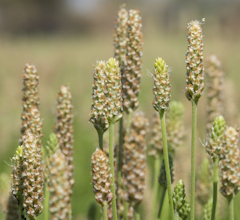Psyllium Husk
If you’re familiar with the word Psyllium Husk, it’s likely that you associate it with laxatives. Whilst this is a correct association (as it is a laxative), it actually does more than you might realise.
laxatives. Whilst this is a correct association (as it is a laxative), it actually does more than you might realise.
Today, we explain why Psyllium Husk is more than just a laxative.
What Is Psyllium Husk?
Psyllium Husk (also known as ispaghula) is the husk of Plantago ovata seeds.
As we mentioned earlier, it’s commonly used as a bulk laxative due to it’s high fibre content, but it’s more than just a laxative, and has many other health benefits too. For starters, not only is it used to treat constipation, but it can help prevent anal fissures, haemorrhoids, and regularise bowel movement in irritable bowel syndrome sufferers too.
Psyllium Husk as a Laxative
Generally, Psyllium Husk is one of the safest of all the laxatives, and thus, is suitable for long term use. Unlike other laxatives, it lacks the habit-forming properties.
It’s safe for use by various age groups, especially by older adults who are more prone to constipation and is low-risk for pregnant women.
Although side effects are rare, some may complain of abdominal cramps, diarrhea, bloating, frequent bowel movement, or stomach pain. In most of the cases, such unwanted effects are short-lived.
An important thing to remember when using this supplement as a natural laxative, is to drink plenty of water. It works by absorbing the liquid, so will only work with adequate water intake.
What Are the Other Health Benefits of Psyllium Husk?
Not only is psyllium husk a great natural laxative, it can help other areas of your body too.
Some other health benefits are:
- Heart Health
For a long time, fibre was considered something inert and of no value to our health. It was thought that because fibre didn’t provide calories, that many people didn’t realise it’s health benefits.
Nowadays, it’s a well-established fact that lack of dietary fibre increases the risk of heart diseases by promoting metabolic disorders such as dyslipidemia. As such, it’s now recommended that an adult consume at least 18g of dietary fibre, but preferably more than 30g per day. However, most adults consume much less than the minimum recommendation of fibre, and this is one of the contributing factors to a higher prevalence of hypertension and heart disease.1
- Weight Loss
Psyllium Husk may assist with weight loss too.
How? It may happen due to two reasons:
- Dietary fibre normalises gut function and motility, which may also correct dietary habits.
- Psyllium helps a person feel full as it can absorb lots of liquid, thus acting as a bulking agent.
- Diabetes Prevention
Dietary fibre helps maintain glycemic balance, which may be due to its beneficial effect on gut health. This may also slow down the absorption of certain carbohydrates, thus preventing spikes in blood glucose levels.2
- Prebiotic
Psyllium Husk is also a prebiotic, meaning that it can have a beneficial effect on the gut bacteria. Gut dysbacteriosis is now thought to be the cause of many disease conditions from autoimmune diseases to neurodegenerative disorders and premature aging.
Psyllium Husk is more than just a laxative. Why not try adding it to your health regime?
Properties
- Anti-Fungal2
- Astringent1
- Colitis2
- Constipation2
- Cystitis2
- Demulcent2
- Diabetes / Blood Sugar1
- Diarrhea2
- Digestive Function2
- Expectorant1
- Haemorrhoids2
- Heart Support / Health1
- High/Good Levels of Fibre1,2
- Hypertension2
- Laxative1
- Prebiotic1
- Skin Issues1,2
- Toxin Removal2
- Ulcer Support2
- Urethritis Support2
- Weight Loss / Management2
References
- Abraham ZD, Mehta T. Three-week psyllium-husk supplementation: effect on plasma cholesterol concentrations, fecal steroid excretion, and carbohydrate absorption in men. Am J Clin Nutr. 1988;47(1):67-74. doi:10.1093/ajcn/47.1.67
- Gupta RR, Agrawal CG, Singh GP, Ghatak A. Lipid-lowering efficacy of psyllium hydrophilic mucilloid in non insulin dependent diabetes mellitus with hyperlipidaemia. Indian J Med Res. 1994;100:237-241.
